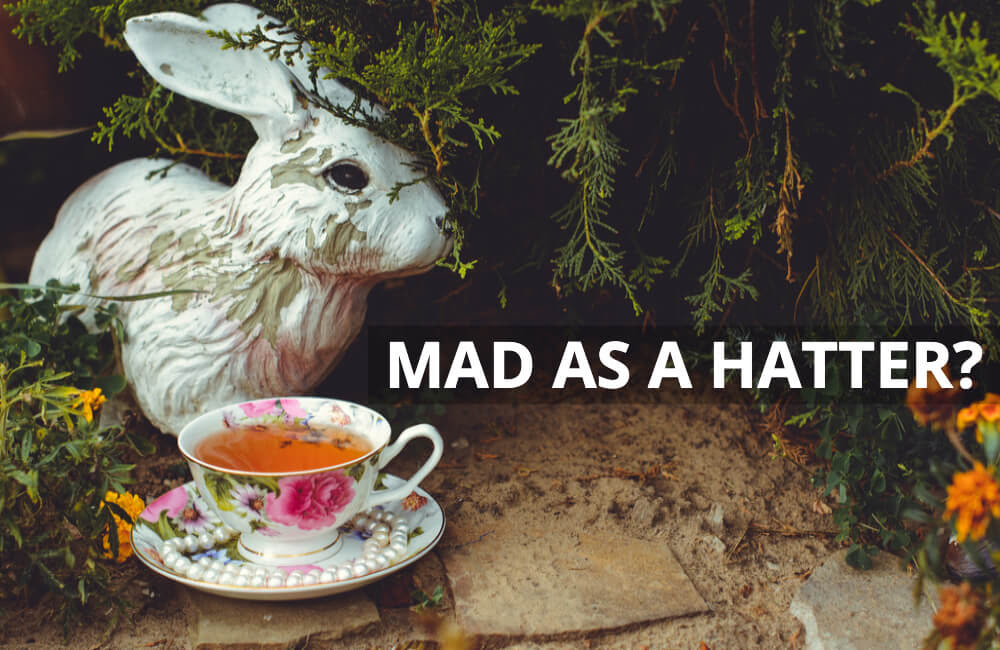
Each week here at the Australian Writers’ Centre, we dissect and discuss, contort and retort, ask and gasp at the English language and all its rules, regulations and ridiculousness. It’s a celebration of language, masquerading as a passive-aggressive whinge about words and weirdness. This week, we’re breaking mad…
Q: Hi AWC, would you like a chocolate? There are 24 in this pack.
A: Um, but…
Q: Don’t be shy, just open the little doors.
A: Do you know how an Advent Calendar works?
Q: What does that have to do with this elaborate Frozen II-themed chocolate box?
A: Never mind. Did you have an actual question?
Q: Yes I did. It’s about the term “mad as a hatter” – I know it came from Alice in Wonderland, but do you know any more about why it caught on?
A: Actually, you’re wrong. The phrase did NOT originate in Lewis Carroll’s famous 1865 book, Alice’s Adventures in Wonderland.
Q: It didn’t? But, but, but the Mad Hatter??
A: Nope. By the way, the character was simply known as the Hatter – although he did get called mad, notably at the Tea-Party. Lewis Carroll never actually used the phrase “mad as a hatter” in his books – although clearly that was his inspiration.
Q: So, off the top of your head, where did it come from?
A: Cute. And it came from sick milliners.
Q: I guess if you had that much money you’d go a little loopy.
A: No, not millionaires – milliners, the term for hat makers. And it all had to do with how hats were made starting from the 17th century.
Q: I’m guessing not by factories in Asia.
A: Good guess. It started with the French, who used mercuric nitrate solution to help cure the felt lining on the inside of the hat. This worked a treat, oh except for the toxic mercury vapours that were given off.
Q: At which point they’d collapse “at the drop of a hat”?
A: Well, yes. But in all seriousness, “Mad Hatter disease” (also known as erethism) would cause the sufferer to experience shaking, dizziness, mental confusion, hallucinations and more. Nasty stuff.
Q: How long did it take for people to figure out it was the mercury?
A: Far too long, with widespread cases throughout the 1800s and the practice only finally ended in the 1940s – about 300 years after it first began.
Q: Wow, they sure kept that under their hat for a long time.
A: Groan.
Q: Any other fun facts?
A: Mad Hatter disease was also known as the Danbury Shakes, after the town of Danbury which for a time during the late 19th and early 20th centuries was the hat capital of the United States.
Q: “Mad as someone from Danbury” just doesn’t have the same ring to it.
A: True.
Q: I’m still recovering from the fact that it was dodgy chemistry rather than Lewis Carroll being responsible for the phrase.
A: But hats off to Carroll for writing it into his book, right?
Q: I’ll do the hat puns around here thank you.
A: Sorry. Although, speaking of Carroll – you might think his book was at least the origin of the phrase, “mad as a March hare”. But again no, that one had been around since the 16th century, relating to how hares would go mad in March – the first month of breeding season.
Q: They breed like rabbits apparently.
A: Indeed.
Q: Wait, surely “grinning like a Cheshire Cat” came from the book?
A: Again, no. It seemed that Carroll didn’t coin any of these. Rather, the characters themselves were based on the phrases and not the other way around.
Q: Well I think it’s time to head off. Hats all folks!
If you have a grammar gripe or punctuation puzzle that you’d like our Q&A to explore, email it to us today!
About us
Contact us